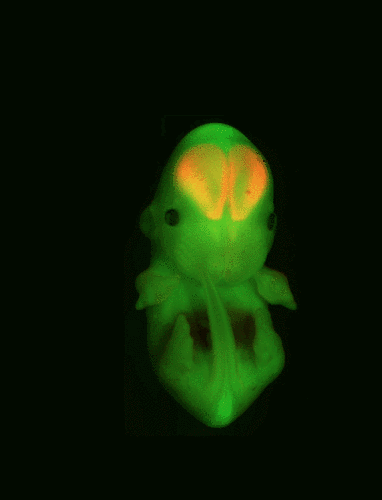
Why do humans and some primates have such big brains? This question will keep haunting Wieland Huttner, director and research group leader at the Max Planck Institute of Molecular Cell Biology and Genetics (MPI-CBG). Recently, his group discovered why iodine deficiency during pregnancy can have a negative impact on the brain development of the unborn. Now his team identified another factor that regulates the size of the brain: Tis21. This gene’s coding region is very small, but on the other hand, it has a very long non-coding region. If this region is knocked out, the result is a significantly smaller brain size, called microcephaly. The results were published in Cell Reports.
During brain development, a neural stem cell divides repeatedly asymmetrically, into a progenitor cell and a stem cell, which thus ensures the stem cell’s self-renewal. This cycle is a prerequisite for the huge amount of cells that is necessary for a big brain. The function of the long non-coding region of Tis21 has been unknown. This region, however, has been highly conserved in evolution, which means it hardly varies in various species over time, indicating that its function is of fundamental importance. Ji-Feng Fei, a doctoral student in Huttner’s team, tested this in mice: Knocking out the long non-coding region of Tis21 triggered a high concentration of the Tis21 protein. And this has disastrous consequences: Neural stem cells now divide terminally symmetrically into two progenitor cells – the stem cell is consumed, and not renewed. This means the number of cells is reduced accordingly and as a result, brain size is significantly smaller.
Ji-Feng Fei, Christiane Haffner and Wieland B. Huttner:
3’-UTR–dependent, miR-92–mediated restriction of Tis21 expression maintains asymmetric neural stem cell division to ensure proper neocortex development and size
Cell Reports, 10 April 2014, doi: 10.1016/j.celrep.2014.03.033